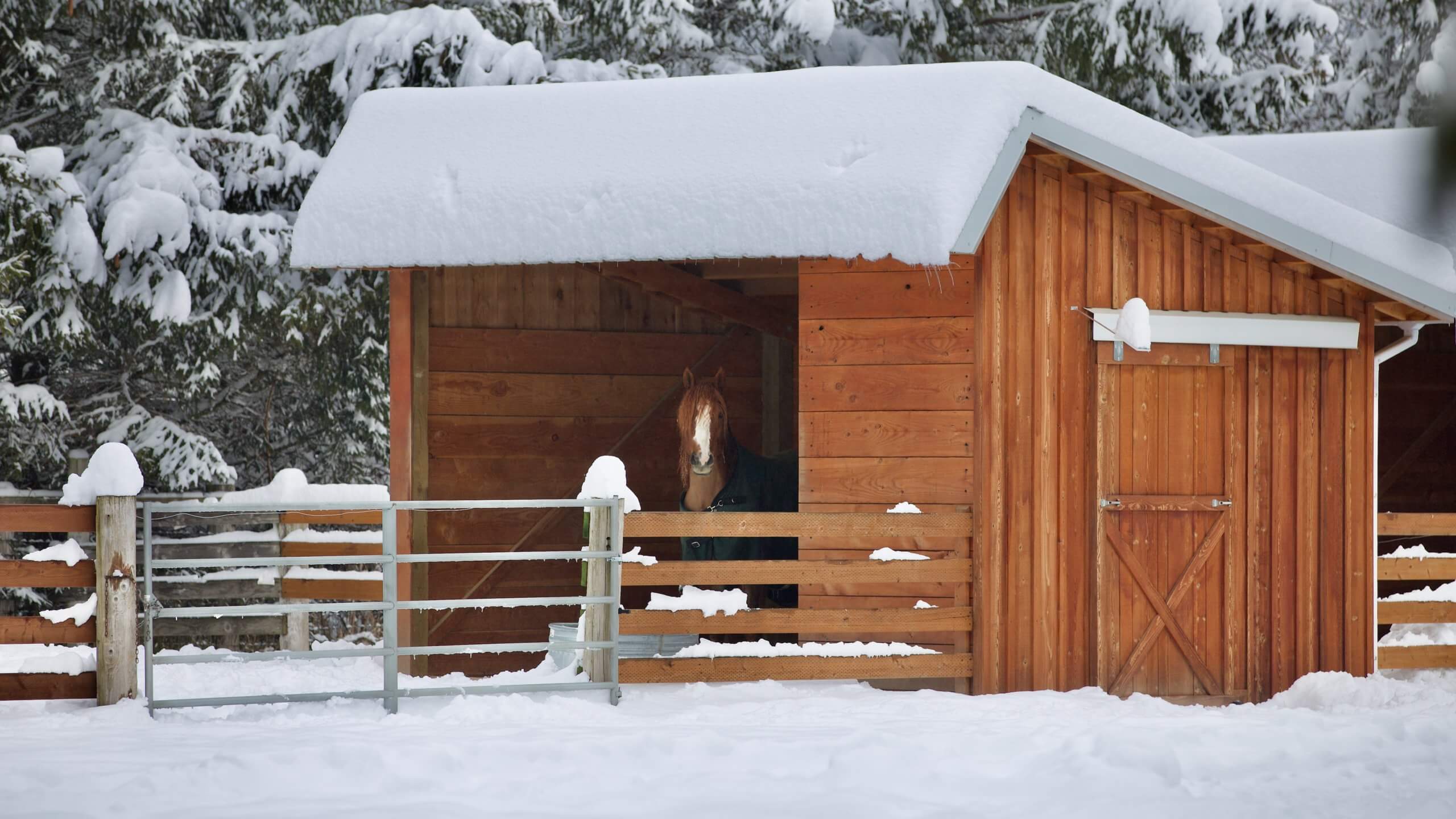Article by Eleanor M. Kellon, VMD for ECIR Group Inc.
Frozen and lumpy ground can make any horse hesitant and short-strided but cold-induced hoof pain is something different.
Most horses are energized by cooler weather, bucking and playing exuberantly. But for some horses, temperature drops mean the temporary onset of relentless hoof pain. Thresholds vary by the individual, but the onset can appear even with modest drops to around 40º F (4.4º C) and quickly disappear when temperatures rise above this threshold.
The syndrome is sometimes called winter laminitis because of the severity of signs and reluctance to move, but there is no evidence of inflammation and typically no radiographic changes. The cause actually seems to be a failure of the hoof to effectively respond to cold-induced changes in circulation.

Cold weather normally reduces blood flow to the limbs and hooves, which is why feet grow more slowly in winter. The hoof has a rich network of arteriovenous shunts which are pathways for blood to be moved away from the tissues, returned directly to the veins, and from there to the body. Cold weather causes a reflexive opening of these shunts to quickly divert blood back to the core and preserve body heat in cold weather.
In horses not bothered by the cold, homeostatic mechanisms will periodically close off the shunts and perfuse the tissues to prevent oxygen and nutrient levels from getting too low. In horses with cold-induced hoof pain, this process appears to fail and the tissues are not adequately perfused. Support for this inadequate profusion being the cause of the hoof pain comes from the response to efforts to support circulation.
Jiaogulan is a Chinese herb with a well-documented ability to stimulate the production of nitric acid by the endogenous nitric oxide synthase enzymes (eNOS) located inside blood vessels. Nitric oxide is a potent vasodilator in the body. The vasodilating effects of jiaogulan can be further supported by providing arginine, citrulline and folic acid — the raw materials needed to generate nitric oxide.
Susceptible horses can be further supported by blanketing them to conserve body heat and by the use of leg wraps. Lined shipping wraps work particularly well because they are easy to apply and won’t slip down, which can constrict the tendons. Felt-lined boots or the use of wool socks over the feet before applying boots completes the picture. Another advantage of using shipping boots is that they typically extend down to cover the heels and coronary bands, which keeps snow and rain out of the boots.
Cold-induced hoof pain is a temporary but a significant issue for your horse. Fortunately, it can usually be successfully managed.
For further reading see 2015 and 2013 NO Laminitis! Conference proceedings Winter Laminitis and Endothelin-1 in Laminitis at www.ecirhorse.org.
About ECIR Group Inc.
Started in 1999, the ECIR Group is the largest field-trial database for PPID and EMS in the world and provides the latest research, diagnosis, and treatment information, in addition to dietary recommendations for horses with these conditions. Even universities do not and cannot compile and follow long term as many in-depth case histories of PPID/EMS horses as the ECIR Group.
In 2013 the Equine Cushing’s and Insulin Resistance Group Inc., an Arizona nonprofit corporation, was approved as a 501(c)3 public charity. Tax deductible contributions and grants support ongoing research, education, and awareness of Equine Cushing’s Disease/PPID and EMS.
THE MISSION of the ECIR Group Inc. is to improve the welfare of equines with metabolic disorders via a unique interface between basic research and real-life clinical experience. Prevention of laminitis is the ultimate goal. The ECIR Group serves the scientific community, practicing clinicians, and owners by focusing on investigations most likely to quickly, immediately, and significantly benefit the welfare of the horse.
See this article in the 2021 January online edition:

The Northwest Horse Source is an independently owned and operated print and online magazine for horse owners and enthusiasts of all breeds and disciplines in the Pacific Northwest. Our contemporary editorial columns are predominantly written by experts in the region, covering the care, training, keeping and enjoyment of horses, with an eye to the specific concerns in our region.







My previously foundered mare came down suddenly lame as we had a Siberian cold front come in. We live in NW IL and the wind chills were -34F this lasted for 2 weeks. Temps have become more seasonal and we are due for a stretch of 50 degree weather. She is still seriously lame. We have been blanketing her at night and wrapping her legs. She was a rescue that was chronically foundered for many years – 4 years ago we brought her home and rehabbed her and have been happily riding her with no issues. We are very worried for her. She is on grain free diet of just alfalfa and beet pulp pellets along with Vermont Trace minerals and locally grown grass hay. I have added Laminox to her feed. Are we doomed to lose this wonderful mare? She is currently wearing boots with pads and in a well padded stall at night
Please see this article for your answer. Thanks for letting us know about your issue! http://nwhorsesource.com/ask-the-expert-previously-foundered-mare-suddenly-lame/